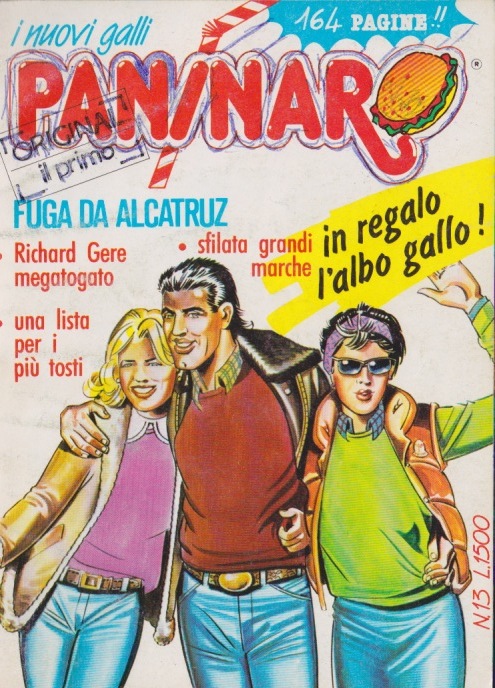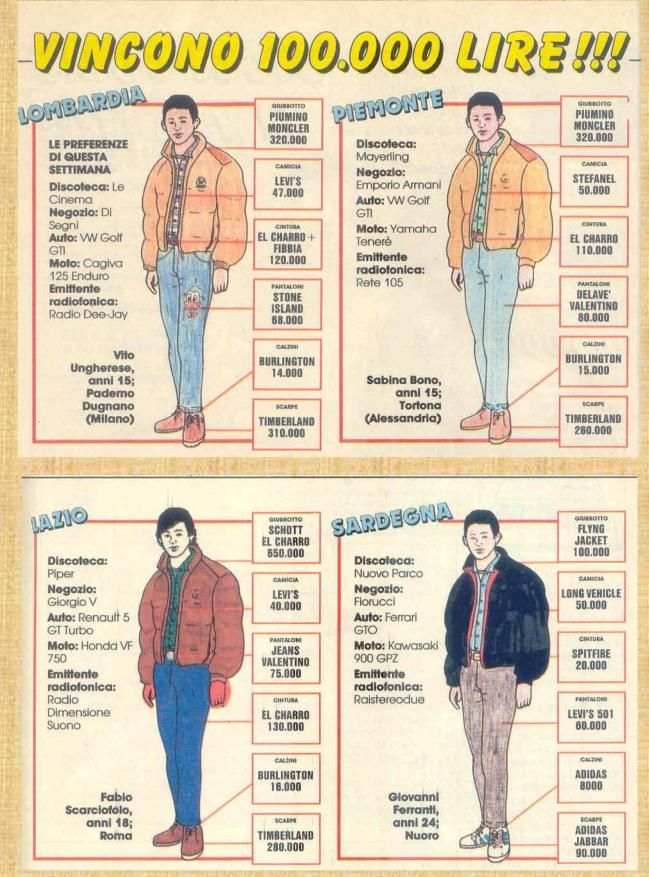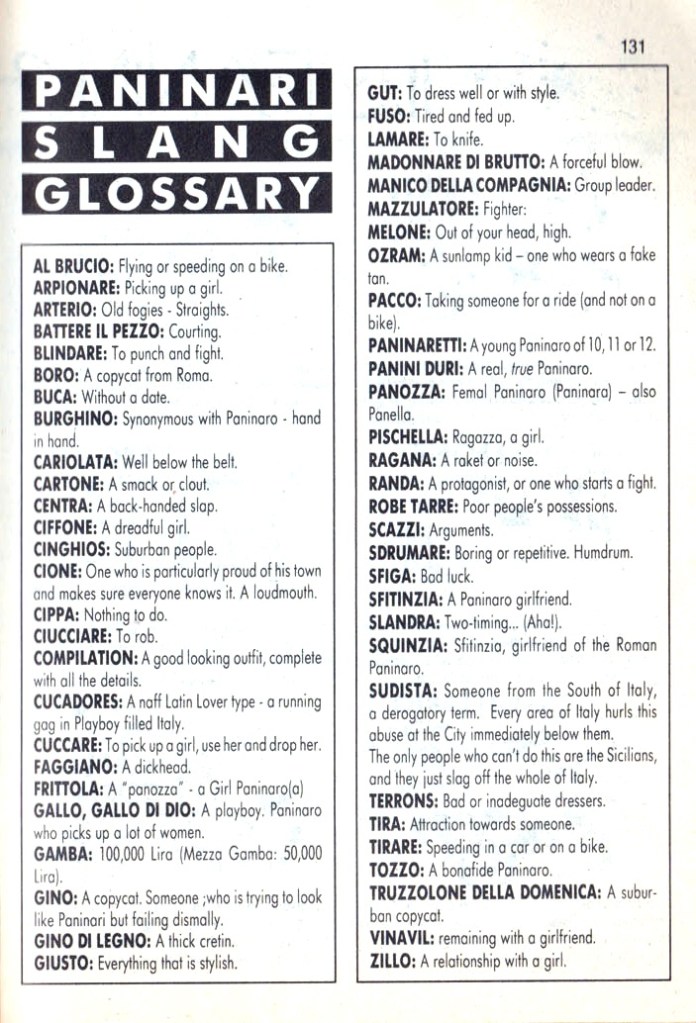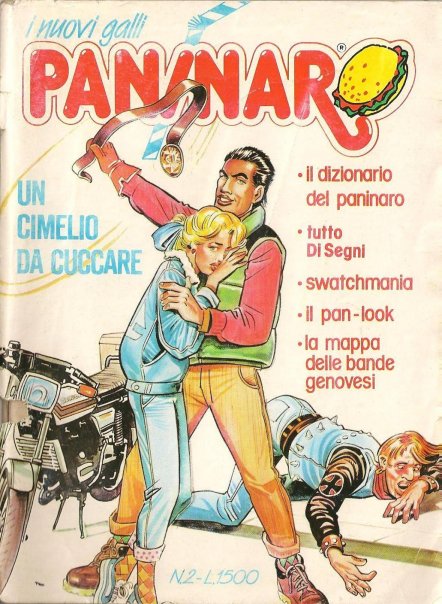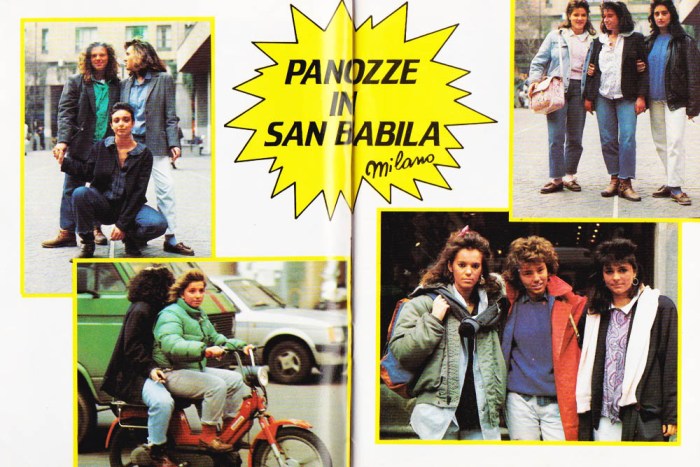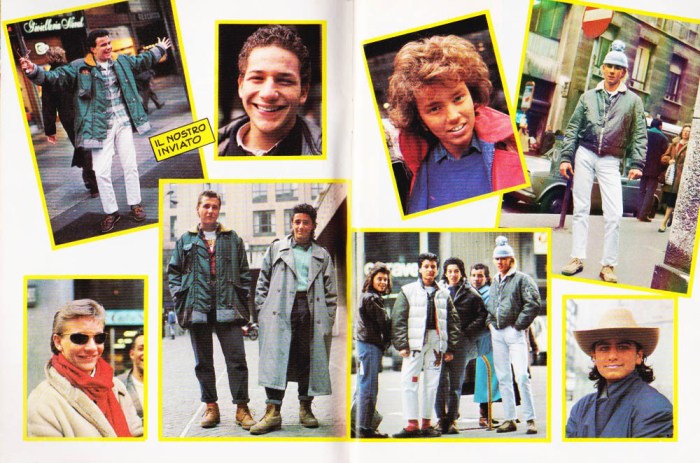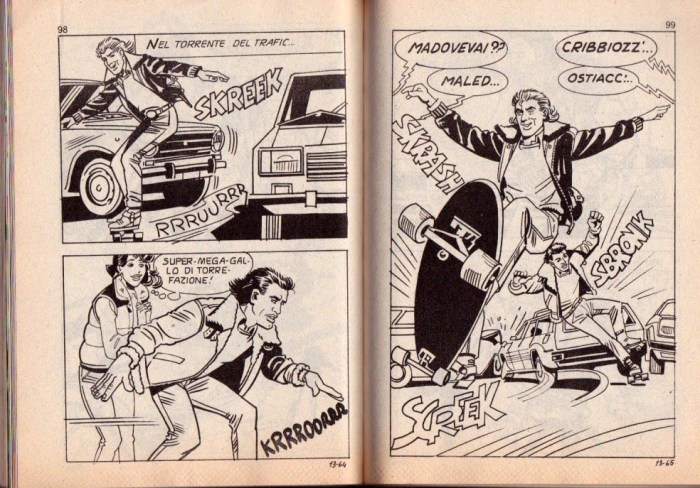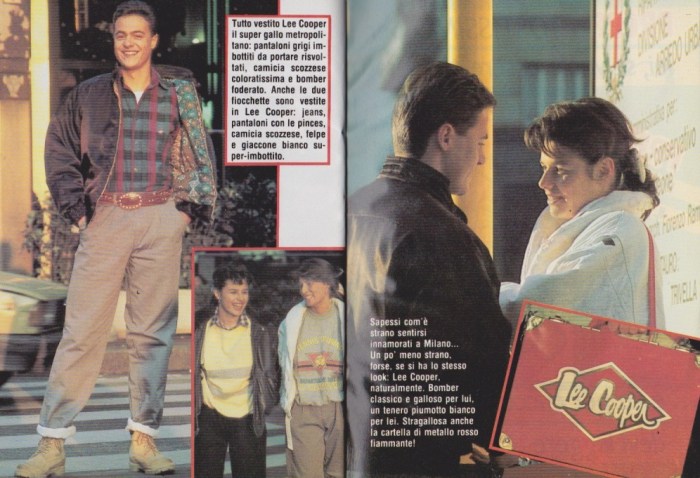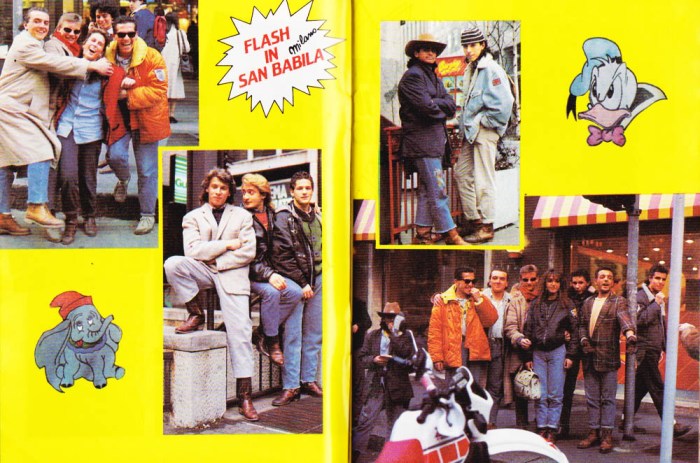Exhibits / February 19, 2018
- Paninaro magazine
- Paninaro magazine
- Paninari ‘Do’s and ‘Don’t’s
- Regional Paninaro variations
- Paninaro Slang for American readers
- Paninari vs. Rockers
- Paninari in Piazza San Babila, Milan
- Paninaro style
- From Paninaro magazine
- More Paninaro looks
- Paninari in Piazza San Babila, Milan
- Paninaro stickers
Object Name: Paninaro magazine
Maker and Year: Edilfumetto, 1986-1989
Object Type: Magazine
Image Source: docmanhattan
Description: (Richard McKenna)
As the post-war economic boom which had been particularly transformative in the industrialized North began to peak, the Italy of the the early 1980s was a country in a state of transformation. Thanks to its history and geographical position, post-war Italy had found itself playing both border and battleground between the US and the USSR, but a new generation of young people were rejecting the factional politics that, through the unresolved legacies of Fascism and Communism, continued to inform, and to some extent dictate, life in the country.
The early ‘80s was also the period when, through the skillful political maneuvering of entrepreneurs like Silvio Berlusconi (a member of the P2 masonic lodge and later the country’s Prime Minister), the commercial television stations that had previously been pint-sized local outfits gradually began coalescing into large-scale professional operations capable of representing a challenge to the hegemony of the national state broadcaster, RAI. As its name made clear, commercial TV did not share the didactic vocation of the three RAI channels and, in the barely-regulated media landscape of the day, was free to indulge itself unscrupulously in nudity, cheap foreign imports, and vast amounts of advertising.
It was in this context that the Milan of the era—no longer the “Violent Milan” of the previous decade’s crime films but the tipsy, good-time Milano da bere—saw the appearance of the Paninari (“sandwich eaters,” the ‘sandwich’ in question being that most American of artifacts, the hamburger), an aspirational youth fashion subculture based around perceived ideas regarding the lifestyle of their counterparts in the United States that expressed itself through an attitude at once rebellious towards the oppressive political and social commitment of previous generations and deeply reactionary. The Paninari—who earned their nickname from their predilection for meeting in the hamburger or sandwich bars then springing up in Milan in imitation of those in the US—embraced consumerism and devoted their energies to expensive designer clothes, feuds with the members of other, less “clean-cut” subcultures such as rockers, punks, and “the Chinese” (derogatory slang for their left-wing peers), and indulged in machismo-driven power fantasies and hedonism—what they saw as living life to the fullest.
Although initially the exclusive domain of the pupils of well-to-do private Milanese high schools where the movement first began in 1982, the paninaro fashion spread throughout the country and classes, and though some Paninari were associated with the various Italian neo-fascist movements, this was not true of all. Many Paninari simply wished to be galli—flashy cocks-of-the-walk who took no orders from anyone and whose political orientation was disinterest and diffidence, or, at most, reactionary conservatism. In the second half of the decade, however, increasing numbers of Paninari were drawn towards far-right politics, underlining the parallels with the football hooligans of the late ’80s UK, who also made ostentatious show of luxury consumerism.
In some ways similar to the British Mod movement of the previous decades, which had taken inspiration from ideas about fashionable Italian youth style and also counted large numbers of working-class young people among its ranks, the Paninari attempted to dress, consume, and behave in ways meant to emulate the ways of their “preppy” American peers. Touchstones of Paninaro culture included the discotheques they loved to frequent; sixteen-year-old paninara (or more accurately, a sfitinzia, Paninaro slang for an attractive girl) Clizia Gurrado’s 1985 autobiography Sposerò Simon Le Bon (“I’m Going To Marry Simon Le Bon,” of which a film was also produced); the TV variety show Drive In, where comic Enzo Braschi played a paninaro and contributed words to the subculture’s slang; an obsession with American-style brands like Timberland boots, Levi’s 501s, and black Ray-Bans; and Garelli scooters or Zundapp 125 motorbikes, which they often drove with their trouser cuffs rolled up to display their expensive socks.
Paninari preferred American films, especially testosterone-driven blockbusters like Rocky, Rambo, and Top Gun, and foreign music like Duran Duran, Spandau Ballet, and the Pet Shop Boys, who in 1986 briefly brought the name of the subculture to worldwide attention with their song “Paninaro,” the B-side to their single “Suburbia,” which was released as a single in Italy the same year.
An article in a 1985 number of the center-left daily newspaper La Repubblica underlined how traditional left-wing political groups were struggling to “understand the emptiness and apathy in which these gangs of young people, overwhelmed by consumerism, have developed—even the youthful members of Milan’s Proletarian Democracy party have attacked the paninari… dubbing as ‘spoiled scions of middle-class Milan’ this tenuous and indefinable generation united less by common membership of the moneyed classes than by the desire to belong to a group which expresses itself through the most accessible and harmless symbols of wealth.”
Several comic magazines were published to capitalize upon the subculture, including Cucador, Sfitty, Preppy, and Il Paninaro. The latter, which at one point was selling more than a hundred thousand copies per month, was published by Edifumetto, a prolific publishing house founded by Renzo Barbieri, whose comics—usually erotic and often taking inspiration from some cultural phenomenon of the moment—have often been credited with revolutionizing the world of Italian comics.
The Paninaro magazine ceased publishing in 1989, with its 49th edition.
